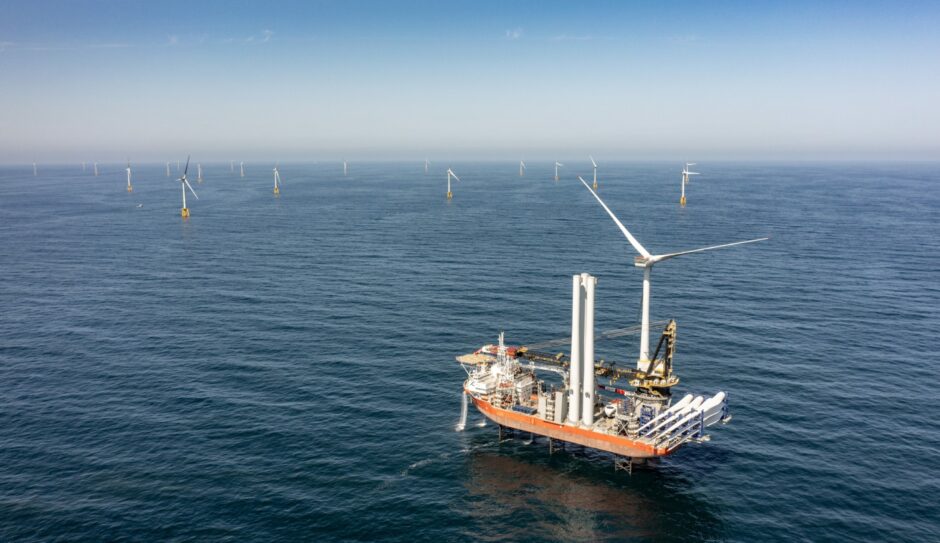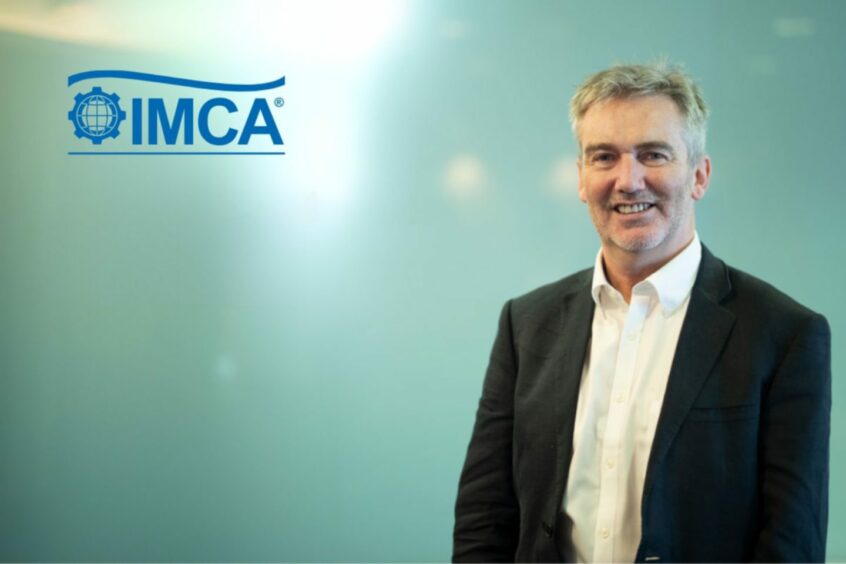
As ambitious targets and capacity grow, the future of offshore wind is largely already written; it’s the present that appears to be most tricky to navigate.
With finance-busting inflation, onerous risk burdens and loss-making contracts, the hard task of building and installing the energy transition is a difficult proposition for many marine contractors.
At the same time, oil and gas companies are considering where to invest their record piles of cash – a situation that is leading many companies to think long and hard about where they want to work, according to Iain Grainger, the newly installed chief executive of the International Marine Contractors Association (IMCA).
“Commodity prices are still pretty high – not as high as they were at $100 a barrel – but the mid-$70s is still healthy, and a lot of contractors now have choices,” he explained.
“They could choose to go get better terms and conditions and probably make better margins in oil and gas – or they can try and push up their prices, their margins, their contingency and for better contract terms in offshore wind.”
“I don’t think anybody’s dropping offshore wind – I’m just thinking that when they’ve got a choice, they will choose the best option.”
His assessment comes after IMCA – which represents around 700 companies including major contractors, OEMs and developers –has given several warnings in recent months over the long-term sustainability of the sector.
It’s a message that Mr Grainger has been echoing loud and clear since taking the helm of the organisation in May.
Drawing on over 30 years of experience in offshore marine construction that saw stints at Brown & Root and strategic roles with tier-one contractors, like Acergy, Subsea 7, and McDermott International, he is no stranger to these challenges – nor to the cyclical nature of the business.
Much of today’s turbulence stems from “chronic underinvestment” during the late 2010s, he ventures, as plummeting oil and gas prices forced firms to diversify into renewables, albeit under vastly different terms and contracting structures to those they were used to in the oil sector.
“There was certainly a quicker drive from 2015 when commodity prices dropped. That was a commercial drive to get utilisation for your assets,” he said.
“But if you look at all of the supply chain’s profit and loss accounts over the last seven or eight years you’ll find a sea of red – whether it’s an OEM or a major contractor, no one’s making money.”
Against that backdrop, firms may be able to secure financing from lenders, but getting shareholders to invest in new capacity and assets is clearly a struggle.
For Mr Grainger, the current moment likely marks an inflection point for the offshore wind sector, as a mix of economics, commodity prices and the availability of supply chain capacity set the course for the coming years.
“I always say the first decade was subsidised by governments with high CfD prices, et cetera. The second decade, or the last eight years, has been subsidised by the supply chain – and I think we all know that moving forward now it’s only going to be paid for by the consumer,” he says.
Higher prices, cancelled projects
That shift is good – necessary – for the sustainability of the marine sector. But it’s not without its turbulence.
“I think the supply chain is going to make better returns because there’s going to be an under supply and an over demand. But what’s that doing? It’s causing inflation and it’s causing projects to be at risk.”
That is already having serious consequences for offshore projects. He points to the US’ SouthCoast project – a 1.2GW joint venture by Shell and Ocean Winds – which has recently terminated a swathe of offtake contracts which are now deemed sub-economic due to the rising cost of building the scheme.
Representatives for the project said in June that even after factoring in tax incentives, termination fees and financial penalties, cancelling the contracts was the “prudent commercial course” in the present climate.
Mr Grainger’s comments came just days before developer Vattenfall also called off its development of its Norfolk Boreas scheme in the UK – also due to costs, which the group said had risen by 40%.
Orsted, too, said it would analyse the effect of current policy on its UK portfolio, with similar doubts cast by observers over the prospects for its 2.8GW Hornsea 3 scheme.
It spells a clouded outlook for the sector and the supply chain – made even more complicated by the fact that CfDs and lease approvals do not always guarantee when – or if – a project makes it to the water.
“You can produce all the papers that show that the licencing round for Scotwind or INTOG or AR4 – all of those projects – but putting a timeline on when those projects will actually go is extremely difficult.
“The supply chain only really makes those commitments when it’s got a firm contract in its hands. And not many developers have been keen to do that because of the uncertainty of timing,” he adds.
‘Unsustainable’ risk
Chief amongst the concerns for IMCA is the allocation of risk within offshore contracts, particularly in offshore wind, where the organisation has long argued that practices are “unsustainable.”
Much stems from how industry contracts are drafted and administrated. Oil and gas projects typically use the LOGIC standard, while offshore wind has adopted the FIDIC approach used in engineering and consulting.
“It cannot be that all the risk is passed down in the supply chain when some of those risks are unknown.”
Mr Grainger argues the nature of marine construction work makes FIDIC a “very unsuitable” choice, often exposing contractors to unlimited liabilities and inflexible deadlines – factors which may often be outside the control of the organisation when weather windows and other delays are not uncommon.
“It cannot be that all the risk is passed down in the supply chain when some of those risks are unknown,” he added.
Addressing these disparities is a key objective for IMCA and its members, and he is confident there are avenues to explore.
“There are ways [to fix it] – it worked in oil and gas back in the early 1990s when the industry came together, that was called cost reduction in new era (CRINE),” he continued, a standard that would evolve into LOGIC.
“I think we need to collaborate to understand what the overall risk is, and who’s best to capture it. Can we mitigate some of those risks by doing more upfront work?”
“Things have to change and it’s only going to change if all the parties come together.”
Capacity shortfall
Looking at the sector more widely, Mr Grainger fears the UK’s domestic supply chain is not robust enough to meet the scale of the ambition set out by the country’s offshore wind targets.
“We don’t have enough capacity, whether it’s ships, factories or people in the UK, to actually deliver 50GW by 2030 is the honest answer,” he asserts.
“If we only had 50 gigawatts in the UK and didn’t have 120GW across the whole of Europe and 30GW in the US and more across all the individual countries – but when you add up the global target, the answer is no.”
“So, the question is: how do you attract those projects to go ahead in your country or your region?”
In his view, if governments hope to achieve them they should therefore remove as many barriers as possible – whether that’s supporting visa waivers to ensure a sufficient workforce or inflexible local content requirements – to provide as much flexibility to marine contractors with the scale required to get the job done.
“Don’t cut off your nose to spite your face by trying to make the capex phase – which only lasts for two or three years – too onerous,” he says.
“It’s going to get done by international contractors, international specialist vessels that cost hundreds of millions or billions of dollars.
“Let those international companies come in and build the stuff safely, economically and then go off and do it somewhere else.”
Instead, he suggests local content requirements should focus on the operations and maintenance (O&M) for wind assets, giving local workers security over a 25-year period, and potentially beyond.
But despite the challenges he sees, Mr Grainger is optimistic that the fortunes of contractors is changing as the market allows for greater “choice”.
Ultimately, he reiterates a call IMCA recently gave politicians in Washington DC.
“Everybody’s in transition, there’s no doubt.
“But don’t put any headwinds in the way of offshore wind in terms of new legislation or difficulties. Listen to the industry.”
Recommended for you

 © Supplied by IMCA
© Supplied by IMCA